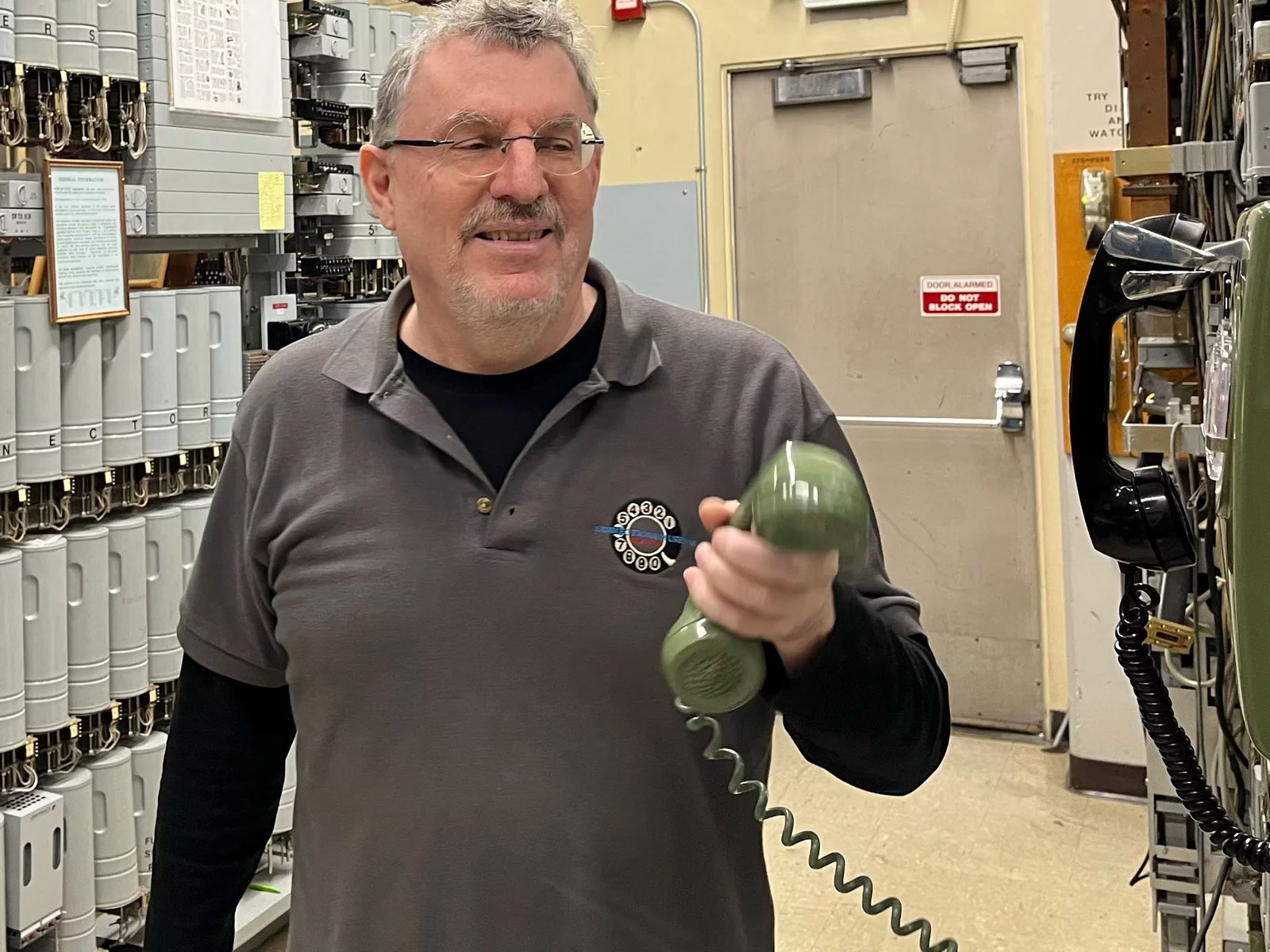 VIEW LARGER Peter Amstein, a volunteer who serves as president of the Connections Museum board, says early phone technology shaped his IT career.
VIEW LARGER Peter Amstein, a volunteer who serves as president of the Connections Museum board, says early phone technology shaped his IT career. As Peter Amstein squeezes through a warren of equipment racks draped with wire and crammed with whirring machines, he offers a cheerful warning.
"There are exposed electrical terminals, probably nothing will kill you," he says. "But there are definitely some things that will give you a fairly unpleasant zap, so do be a little cautious about what you touch."
Amstein works in Seattle's tech industry, but in his spare time he's a lead volunteer, tour guide and board president of the group that runs the Connections Museum.
This is a place where self-described technology nerds such as Amstein are preserving and restoring machines that ran America's first landline telephone network.
It's a Willy Wonka's factory of clattering gizmos, many invented by steam age eccentrics and tinkerers who managed to connect an entire world.
"This is a high tech startup story, only it's 120 years old now," Amstein says.
 VIEW LARGER In the age before computers and plastics, America communicated using steam age technology and networking systems worked out by tinkerers.
VIEW LARGER In the age before computers and plastics, America communicated using steam age technology and networking systems worked out by tinkerers. These days Americans often connect to other humans through machines and computers, everything from texting to dating apps to Zoom.
It's easy to forget how we got here, how the phone system formed our first social network and how its design still shapes how we talk today.
"So much of the stuff that I built my whole [tech] career on comes out of the telephone system, out of the early developments," Amstein says.
A voice on a wire, a network connecting a world
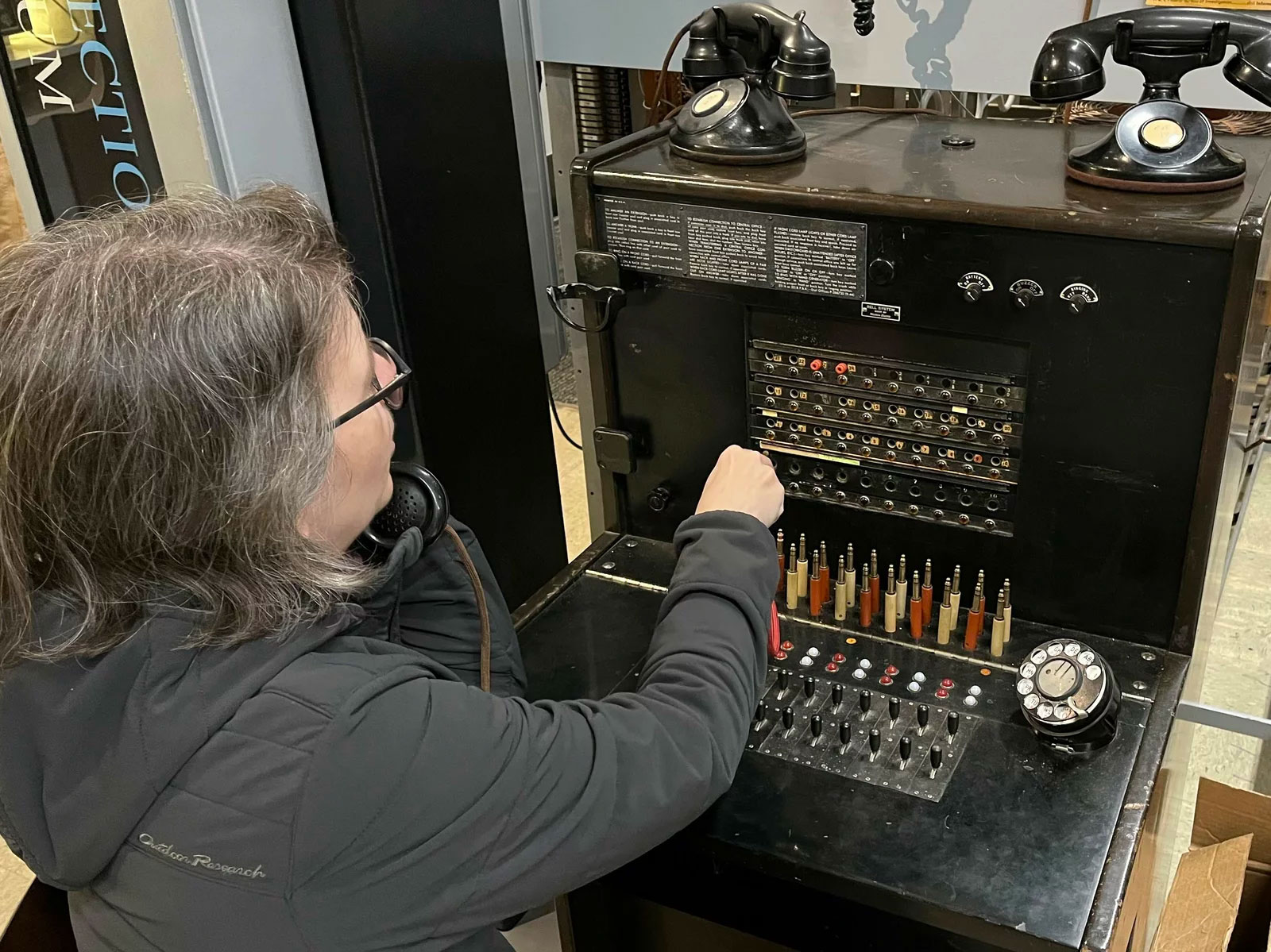 VIEW LARGER A visitor at the Connections Museum works the kind of switchboard system that first connected American phone users.
VIEW LARGER A visitor at the Connections Museum works the kind of switchboard system that first connected American phone users. It turns out that was sort of the easy part. Once you figure out how to help people talk over long distances, you have to come up with a network that can link a globe of chatterboxes.
The first step was human operators, usually women, who served sort of as the first software running the system.
"Should I gender stereotype you and ask you to be the telephone operator?" Amstein says, inviting a woman visitor to sit at the museum's antique switchboard.
Once she's ready, he coaches her how to make connections one cable at a time. "Number please?" she asks, plugging in the cable and causing the phone to ring promptly.
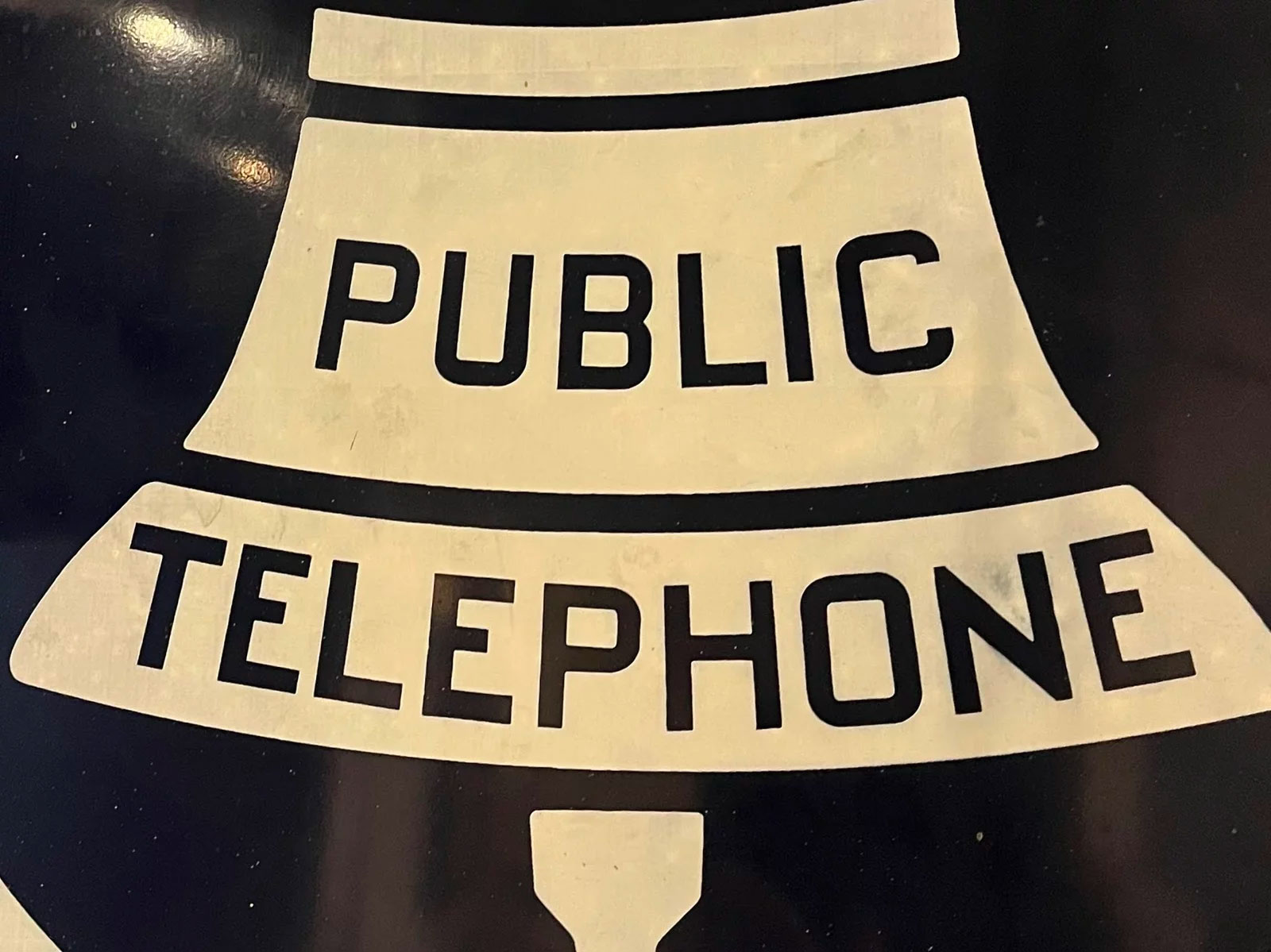 VIEW LARGER Public pay phones worked on a musical chime system that allowed operators to tell whether you had paid enough money to make your call.
VIEW LARGER Public pay phones worked on a musical chime system that allowed operators to tell whether you had paid enough money to make your call. At first, the technology allowing women to run the network was improvised from stuff inventors found lying around, often as simple as musical chimes or bells.
For the first generation of payphones, for example, women operators listened to musical notes rung by different-sized coins as they were dropped into the slot.
"She could hear it," Amstein says. "The microphone was here [in the phone box], and she could hear the sound of the bells."
Clever but super slow. Not practical if you want to connect thousands, then hundreds of thousands of people.
Tinkerers find ways to automate a growing system
Inventors then started coming up with steam age machines that could also listen and make connections much faster.
Amstein demonstrates one of the earliest, most durable devices, known as a Strowger switch, invented in the late 1800s by an undertaker in Kansas City, Mo. "When I pick up the phone here, one of these machines springs into action," he says.
The device whirrs to life, sounding sort of like a drummer tapping out a beat on a cymbal. As Amstein dials a rotary phone, the Strowger switch registers little blips of sound, counts them and makes connections with amazing accuracy.
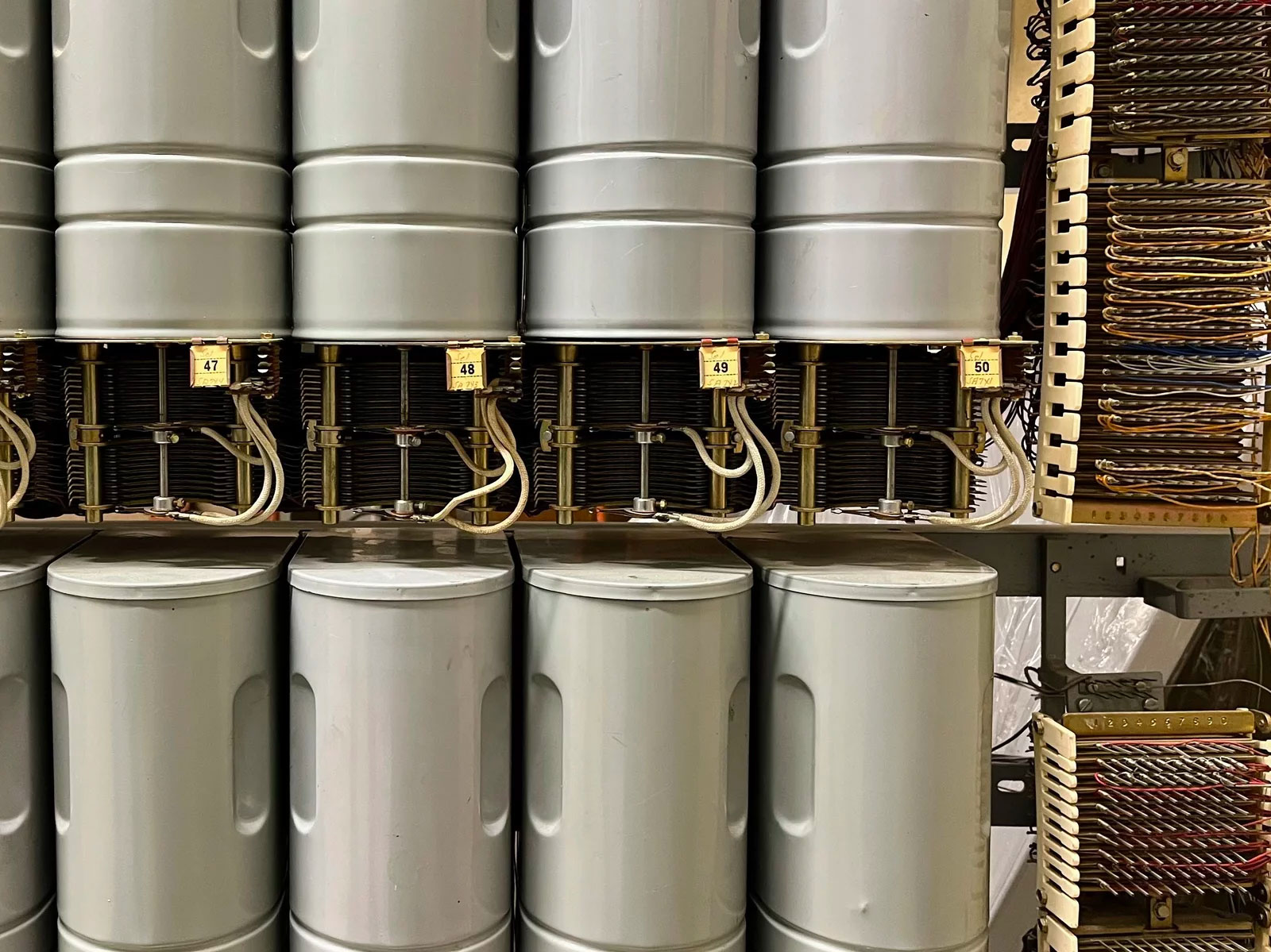 VIEW LARGER This restored version of the Strowger switch in the Connection Museum collection was manufactured by Western Electric. The device relied on pulses from rotary dial telephones to figure out what connections to make.
VIEW LARGER This restored version of the Strowger switch in the Connection Museum collection was manufactured by Western Electric. The device relied on pulses from rotary dial telephones to figure out what connections to make. Designs for automatic switches got faster and became more reliable, connecting America for more than a century. Then in the late 1990s, computers came in and machines like this were junked almost overnight.
"It's a beautiful machine"
Amstein shows off one of the prizes of the museum's collection, a panel switch system that fills whole corridors of equipment racks.
"This is the last of its kind anywhere, the only working panel switch anywhere on the planet," he says.
Picture giant looms with cables shuttling up and down linking phone lines.
They found this machine mothballed and abandoned in a phone company storage room. One of the volunteers, Sarah Autumn, spent months splicing it back together again.
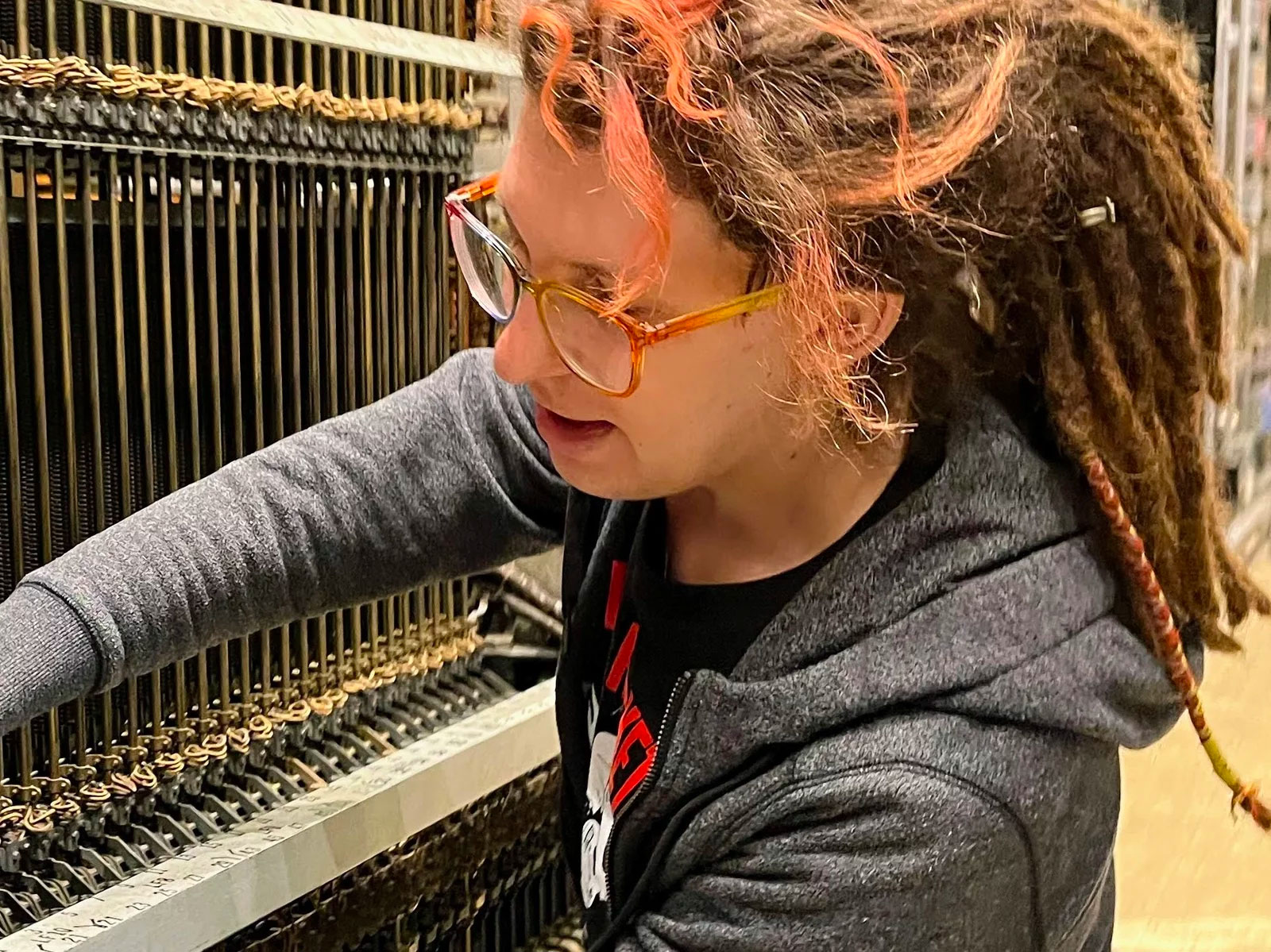 VIEW LARGER Sarah Autumn, a volunteer at the Connections Museum, helped restore the complex panel switch phone system, the last of its kind operational in the world. The work took her more than a year.
VIEW LARGER Sarah Autumn, a volunteer at the Connections Museum, helped restore the complex panel switch phone system, the last of its kind operational in the world. The work took her more than a year. "It wasn't easy," she says. "It took me about a year just poking at it before I could even begin to understand it in any real depth."
Like Amstein, Autumn works in Seattle's tech industry.
Asked why she spent hundreds of hours of her spare time bringing this device back to life, she talks about it not like a broken appliance, but like a work of art.
"I fell in love with it because it's a beautiful machine," Autumn says. "Folks who worked on these systems were highly skilled and highly trained at understanding this complex web of interrelationships."
The people working here say there's graceful engineering woven into a lot of these machines, important ideas that were almost lost.
The technology feels ancient. But in the rumble and clatter of these old machines, you can glimpse a piece of how America got to where we are now — an age of smart phones, TikTok and AI.
 VIEW LARGER Rotary dial phones, invented by an undertaker in Kansas City, Mo., in the late 1800s, were standard technology in the U.S. for more than a century.
VIEW LARGER Rotary dial phones, invented by an undertaker in Kansas City, Mo., in the late 1800s, were standard technology in the U.S. for more than a century.

By submitting your comments, you hereby give AZPM the right to post your comments and potentially use them in any other form of media operated by this institution.